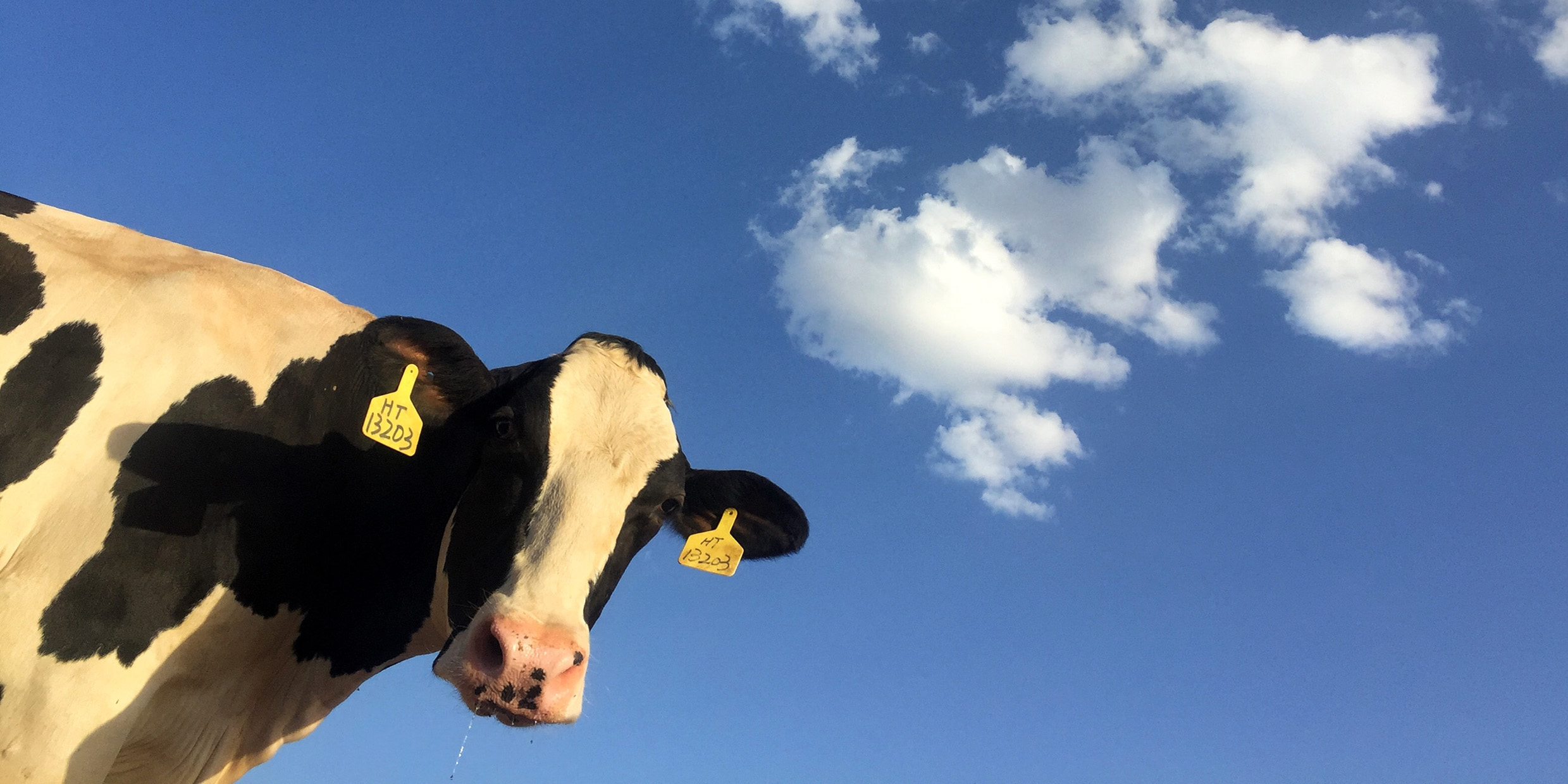Originally published 21 September 1987
You may have heard the old rhyme: “I never saw a purple cow, I never hope to see one; But I can tell you, anyhow, I’d rather see than be one.”
So why aren’t cows purple? Or pink? Some months ago in the journal Nature biologist Ralph Lewin asked the question “Why are cows not green?”
Now wait! Before you go running off to the comics pages you should know that Lewin’s question is not altogether frivolous. Sometimes apparently silly questions can have interesting answers.
Lewin’s question was sparked by a report in Nature by Diane Stoecker, Ann Michaels, and Linda Davis, biologists at Wood’s Hole Oceanographic Institute. These researchers studied some remarkable little animals that use sunlight to make food. But, you say: Animals can’t do that. Only plants have the chemical machinery necessary for photosynthesis.
And you are right. Plant cells have little compartments called chloroplasts that contain chlorophyll. It is chlorophyll that gives plants their characteristic green color. And chlorophyll enables plants to use the energy of sunlight to build sugars and other nutritious things. Animal cells have no chloroplasts. So animals must get their energy by eating plants or other animals that eat plants.
Except! The animals investigated by the Wood’s Hole scientists are single-celled, microscopic protozoa that live in the sea. These protozoa graze upon algae, single-celled plants, much as a cow might graze upon grass.
Internal gardening
And here’s the trick. The protozoa digest most of the substance of the algae, but not the chloroplasts, the parts of the alga cell that are involved in photosynthesis. The little animals then use the sequestered chloroplasts to make their own food from sunlight.
In a sense, they are animals that do a bit of gardening inside their own bodies. And the chlorophyll in the borrowed chloroplasts gives these otherwise transparent and colorless animals a distinctly greenish tinge.
So, asks Lewin, why don’t cows do the same thing? Cows eat grass. Why don’t cows retain intact the chloroplasts from the grass cells? Then they could do a bit of photosynthesis on the side, making some of their own food directly rather than wasting all that time nibbling grass. A little carbon dioxide from the air, a little water, a few rays from the sun, and—voila!—dinner. Already inside, ready to use.
The reason that cows aren’t green, suggests Lewin, is because their digestive tracks are too clumsy for this delicate sort of recycling. And, besides, cows are too bulky and too opaque for ingested chloroplasts to have access to the light.
So cows aren’t as clever as the green protozoa at recycling the components of their food. But, says Philip Stewart of Oxford University in a letter to Nature, the question of why there are no green cows can be generalized: Why are there are no green mammals? Green is the optimum color for camouflage in grassland and forests. And there is nothing impossible about green pigmentation: There are plenty of green birds, reptiles, and amphibians. It would seem that natural selection should have favored green for many mammals.
Maybe, muses Stewart, mammals inherited their colors from drab nocturnal ancestors.
But protective coloration has a high survival value. It does not seem unreasonable that green squirrels, green cows, or even green humans might have evolved in a world of green plants. So it is odd that tens of millions of years of evolution have failed to correct the defect for mammals that are active in daylight.
Black grass
But let’s not stop here. Why is green the dominant color of terrestrial plants?
That’s easy. Chlorophyll molecules absorb light at the red and the blue ends of the spectrum. It is the middle of the spectrum (the green light) that is reflected and gives plants their characteristic color.
But, not so fast! A more efficient photosynthetic pigment would be black, absorbing all colors, soaking up all the energy in sunlight. The green light reflected from plants is wasted energy. So perhaps the real question is “Why is grass not black?”
Andrew Goldsworthy, a biologist at the Imperial College in London, puts forward a possible answer in another communication to Nature. Goldsworthy draws our attention to a certain purple bacterium that lives in salt lakes, called Halobacterium halobium. This particular microbe accomplishes a very primitive sort of photosynthesis using a pigment different than chlorophyll that absorbs light in the middle (green) part of the spectrum. This leaves red and blue light at opposite ends of the spectrum to give the bacterium its purple color.
Goldsworthy believes this sort of microbe was the earliest form of life on Earth, teeming in great numbers in the early seas. Chlorophyll-using bacteria evolved later (according to Goldsworthy), and were forced to make use of the light falling on the sea that wasn’t already soaked up by the initially more numerous purple bacteria. These new, green bacteria were ultimately more successful, chemically-speaking, and soon overwhelmed their purple cousins. And from them evolved all green plants.
Now this is pure speculation on the part of Goldsworthy. But it raises the intriguing possibility that except for a fluke of evolution plants might have descended from Halobacterium halobium, the purple photosynthensizer. In that case, we might have had purple grass. And, as a corollary, protectively-colored purple mammals.
So the question “Why are there no purple cows?” is not so silly after all. But I will tell you anyhow, I’d rather see than be one.



